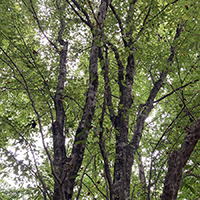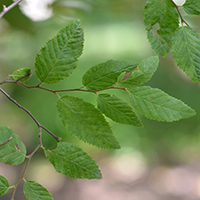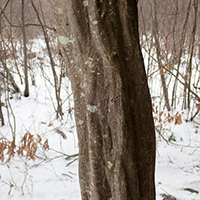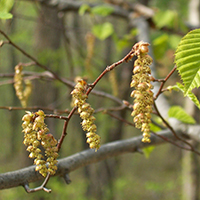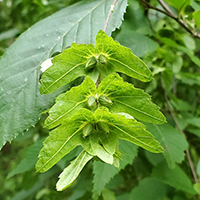What blue beech looks like
Size and shape
- Small, slow-growing tree.
- Reaches 8 metres high.
Leaves
- Blue-green leaves with fine teeth.
- Leaves become progressively larger along shoots.
Bark
- Smooth grey bark with muscle-like ridges.
Flowers
- Long, green-brown catkins with red spots.
Fruit
- Small nuts surrounded by a leaf-like structure called a bract.
- Hang in clusters.
- Turn brown in late fall.
Where blue beech is found
Blue beech is found in Southern Ontario in forested areas around the edges of Lake Erie and Lake Ontario. It is also found around Pembroke, Renfrew and on Manitoulin Island.
What you need to know to grow blue beech
- Moisture: grows best in moist sites and tolerates seasonal flooding.
- Soil: grows best in rich, well-drained soils.
- Shade: tolerates full shade and full sun with ample moisture.
- Growing tips: blue beech is best transplanted as a young, container-grown tree. In poor soils, layer 3 centimetres of compost in a wide ring around the tree before mulching to support growth.
Benefits and uses of blue beech
Wildlife benefits
Deer, beavers and other mammals browse blue beech twigs and leaves. Seeds and buds are a food source for birds such as turkeys and small mammals such as squirrels. Blue beech is also host to several butterfly species.
Commercial uses
Blue beech wood is dense and tough, but the tree’s small size makes it a poor choice for lumber. It can be used for fuel or to make tool handles and small wood items.
Blue beech is adaptable to urban sites and can be pruned as a hedge once established.
Fun facts about blue beech
- Despite its name, the blue beech is more closely related to birch trees than other beech trees.
- Blue beech nuts are called nutlets.
Updated: November 22, 2023
Published: July 18, 2014
